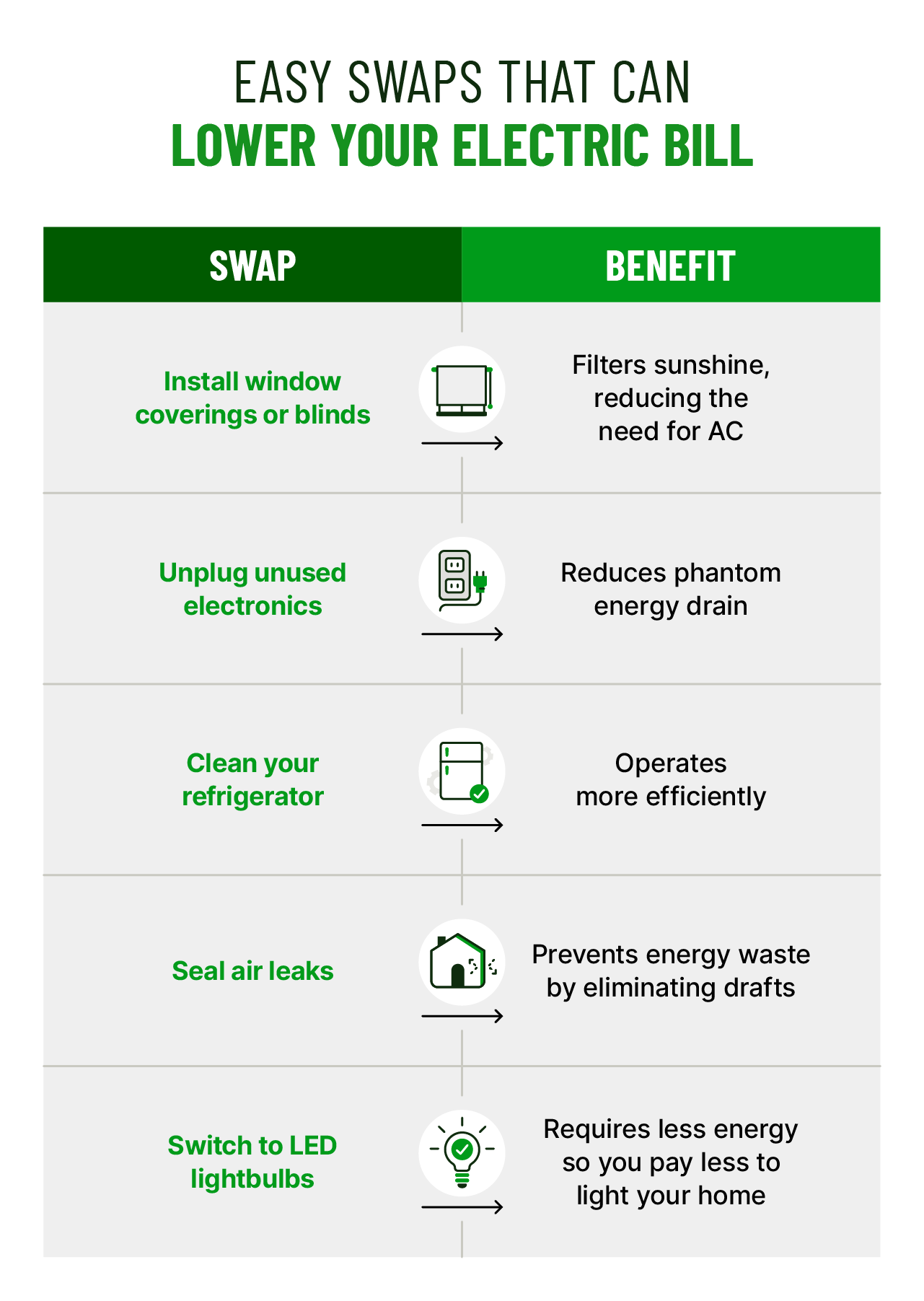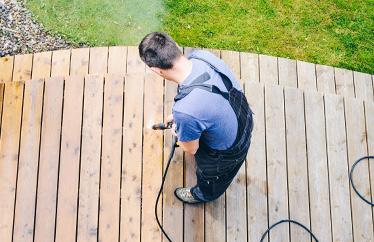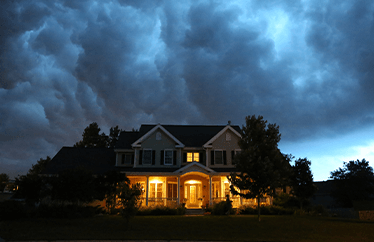How To Save on Your Electric Bill: 10 DIY-Able Ways To Save This Summer

Spring is the perfect time to prepare for the increased energy demands of summer. With longer days and hotter temperatures, air conditioners kick into high gear, leading to spikes in your electric bill.
41% of homeowners say they are primarily DIYing some or all renovation, repairs, and maintenance to manage costs. Preventive maintenance can be the key to a cool and comfortable summer. Taking advantage of spring's mild weather to tackle a few simple projects that keep your home cool will help set you up for a more cost-effective summer.
Our guide will go over 10 steps to help you prevent high energy costs and usage during the summer months. We also include projected savings and steps for you to put each tip into action.
1. Schedule a home energy audit
Home energy audits involve a home energy professional reviewing your home's electric usage and determining ways to reduce your energy usage. These audits uncover opportunities for upgrades with long-term benefits, like developing a smart home strategy with devices that can help improve energy efficiency. This includes tools like smart power strips which may reduce energy drain from devices on standby.
Projected savings:
Homeowners can save an average of 5-30% on their annual energy bills by implementing home energy audit recommendations (U.S. Department of Energy, 2022).
Effort required: Low
Steps to take:
- Contact local utility companies: Contact local utility companies to ask about a home energy audit, which is sometimes free, to identify where you can reduce your energy use.
- Gather your utility bills: Having past bills on hand provides the auditor with valuable data for a more comprehensive analysis.
2. Unplug unused electronics
Even when turned off, electronics draw in a small amount of power. This "phantom energy," as it's sometimes called, contributes to higher electric bills and even poses a potential fire risk. Additionally, phantom energy can overload circuits during peak usage times, potentially triggering power outages.
Common appliances that consume power when turned off:
- TVs
- Gaming consoles
- Printers
- Coffee makers
- Phone chargers
- Desk lamps
- Electric toothbrushes
Projected savings:
Unplugging unused electronics can help save up to $100 per year on your electricity bill (U.S. Department of Energy, 2022).
Effort required: Low
Steps to take:
- Identify energy drainers: Pay close attention to electronics with lights or displays that remain illuminated even when powered down. This contributes to energy drainage.
- Unplug electronics: By physically removing the plug, you eliminate the risk of phantom energy drain and potential electrical hazards.
- Power down strips: Utilize power strips with on/off switches. This helps you cut power to a group of electronics with a single flip, eliminating the need to unplug individual devices each time.
3. Clean your refrigerator
Fridge condenser coils are responsible for maintaining an even temperature inside a fridge. Cleaning your refrigerator's condenser coils and checking the temperature settings can help improve its lifespan and efficiency.
Regular refrigerator maintenance helps improve appliance performance, preventing spikes in energy costs. It can also promote safety by preventing potential overheating issues.
Projected savings:
Keeping fridge coils clean can help lower energy bills by improving long-term appliance efficiency. It also helps reduce the likelihood of spoiled or wasted food that can occur due to fluctuating fridge temperatures (U.S. Department of Energy).
Effort required: Low
Steps to take:
- Clean condenser coils: Clean the coils by using an angled vacuum hose at least once a year, more often if you have pets, to help improve airflow and cooling performance. You can find instructions for locating and cleaning the coils in your owner's manual.
- Optimize temperatures: Set your refrigerator to 37 degrees and your freezer to 0 degrees.
- Avoid overcrowding: Avoid overstuffing your refrigerator shelves, allowing for proper airflow between items.
- Clean up spills promptly: Clean up spills immediately to help maintain a clean and efficient refrigerator.
4. Seal air leaks
Unsealed cracks and openings contribute to moisture problems, this can impact both your health and the durability of your home's structure. Eliminating leaks also helps reduce drafts and cold spots.
Unsealed leaks allow conditioned air to escape in summer, forcing your HVAC system to work harder to maintain a comfortable temperature. This can result in higher energy bills and unnecessary wear and tear on your equipment. Sealing these leaks can help you enjoy improved comfort and lower energy costs.
Projected savings:
Air sealing typically can save homeowners an average of 15% on heating and cooling costs or roughly 11% on their total energy bill (ENERGY STAR, 2024).
Effort required: Low
Steps to take:
- Feel for drafts: Walk around your home with your hand close to windows, doors, electrical outlets, and plumbing fixtures. Drafts will feel cool in the summer and warm in the winter.
- Visually inspect seals: Check and repair the weatherstripping around doors and windows for cracks, tears, or worn-out areas. Look for gaps around dryer vents, fireplaces, and recessed lights.
- Seal the leaks:
- Caulk: Use a caulk gun to seal small cracks and gaps around windows, doors, baseboards, and trim.
- Weatherstrip: Apply weatherstripping to drafty doors and windows to create a tighter seal.
- Foam sealant: Use canned spray foam to fill larger gaps around pipes, vents, and wires entering your home.
- Caulk: Use a caulk gun to seal small cracks and gaps around windows, doors, baseboards, and trim.
5. Switch to LED lightbulbs
LED lightbulbs offer a double benefit: They're cool to the touch, helping reduce the risk of burns, and they're energy-efficient because they generate minimal heat.
Making the switch is quick and easy for homeowners—they fit in the same standard sockets as your old bulbs.
LED bulbs have a lifespan that can last well over 10 years. That’s significantly fewer replacements than traditional incandescent bulbs.
Projected savings:
Switching to LED bulbs can shave an average of $225 off your annual energy bill (U.S. Department of Energy, 2024).
Effort required: Low
Steps to take:
- Research LED bulbs: LED bulbs come in various wattages and color temperatures to match your needs. Look for lumens (lm) on the packaging, which indicates brightness.
- Install LED bulbs: Once you determine the best fit for your home, replace your current light bulbs with LED alternatives.

6. Install smart thermostats
The smart thermostat helps HVAC systems last longer by optimizing cooling cycles and preventing unnecessary wear and tear.
This technology learns your routines and preferences, automatically adjusting temperatures throughout the day—even when you're away. Utilizing smart home devices like a smart thermostat keeps you comfortable while also saving energy by preventing unnecessary cooling cycles.
Projected savings:
Smart thermostats can help save you up to 10% annually on heating and cooling costs (U.S. Department of Energy, 2024).
Effort required: Low
Steps to take:
- Consider compatibility: Ensure your smart thermostat is compatible with your existing HVAC system. Most models work with standard forced-air systems.
- Choose features: Smart thermostats offer a variety of features, so consider your needs. Do you prioritize remote access, occupancy sensors, or integration with other smart home devices?
- Install a smart thermostat: Once you find the right fit for your home, move forward with the replacement. Unless you have a high level of comfort with electrical work, consider consulting with a professional for the installation.
7. Regularly maintain your AC
Regularly maintaining your air conditioning system, especially before the hot summer months, allows you to catch small issues early and helps prevent future expensive repairs. Proper maintenance helps identify potential safety hazards like electrical problems or refrigerant leaks before they become a serious risk.
A well-maintained system and clean filters can remove dust and allergens from the air, creating a healthier and more comfortable living space.
Projected savings:
Regularly maintaining your air conditioning unit can help lower your energy consumption by 5-15% (U.S. Department of Energy, 2024).
Effort required: Medium
Steps to take:
- Change air filters regularly (1-3 months): Dirty filters restrict airflow, forcing your air conditioner to work harder and potentially overheat. This can lead to breakdowns and electrical issues.
- Clean the condenser coil (outdoor unit): This coil releases heat. When cleaning, remove leaves, grass, and debris to improve airflow. A clogged condenser coil reduces efficiency and can cause the unit to overheat, posing a potential fire hazard.
- Vacuum the blower compartment (indoor unit): Dust buildup reduces efficiency and contributes to poor indoor air quality. Regular cleaning supports proper airflow and helps keep your air cleaner.
8. Upgrade your blinds or curtains
To help reduce energy usage, close blinds, drapes, and curtains during the hottest part of the day. This is a simple way to help keep your home cool and minimize strain on your air conditioning system.
Keeping your windows covered during peak daylight hours when you're not home can add an extra layer of security. This helps deter potential intruders, as an empty house with open blinds or curtains offers a clear view of valuables inside.
Projected savings:
Smart management of window coverings can help reduce heat gain by up to 77% (U.S. Department of Energy), potentially saving you on your annual cooling costs.
Effort required: Medium
Steps to take:
- Assess sun exposure: Identify which windows receive the most direct sunlight throughout the day. These are the prime candidates for heat-blocking treatments like thermal curtains or reflective blinds.
- Choose the right fabric: For optimal temperature control, select light-filtering curtains in the summer.
- Think about size: For maximum heat-blocking benefits, choose window treatments that are wider than the window itself and extend close to the wall or window sill.

9. Upgrade to energy-efficient appliances
Energy-efficient appliances can offer a double benefit: helping you save money and enhance safety. They use less energy, minimizing waste and conserving resources throughout their lifespan.
These appliances often have advanced safety features, such as automatic shut-off functions and improved insulation, which can help prevent malfunctions and accidents in your home. Appliances with big savings potential include:
- Refrigerators: Look for ENERGY STAR-certified models with features like automatic defrost and door closers.
- Washing machines: High-efficiency washers use significantly less water and energy per load. Front-load models tend to be even more efficient.
Projected savings:
As consumers replace their appliances with newer models, they might save over $529 annually by 2030 (U.S. Department of Energy).
Effort required: High
Steps to take:
- Target timely replacements: Prioritize replacing frequently used appliances, like refrigerators and washing machines, when efficiency declines or energy usage increases. Look for models with built-in safety features like automatic shut-off functions or improved insulation to reduce risk.
- Research Energy Star models: Look for the Energy Star label, which signifies that the appliance meets strict energy-efficiency standards and often incorporates safety features.
10. Implement energy-efficient landscaping
Keeping tree limbs and brush trimmed enhances energy efficiency while reducing fire risks. Strategic landscaping can help prevent issues like overhanging branches that could damage your roof or siding during storms.
Planting trees for shade and selecting native, low-maintenance plants can help homeowners lower their electric bills. Additionally, these choices contribute to environmental sustainability.
Projected savings:
Carefully positioned trees alone can help save a typical household up to 25% on their energy use (U.S. Department of Energy).
Effort required: High
Steps to take:
- Clean your landscape regularly: Cut back and remove tree branches and vegetation to reduce fire risks.
- Evaluate your outdoor space: Identify areas around your home where strategic tree planting will provide natural shade to reduce the need for air conditioning. Consider factors like sun exposure and proximity to windows and outdoor living areas.
- Research native plant species: Choose plants known for their low water and maintenance requirements to minimize resource consumption.
By implementing these recommendations, you can help work towards achieving savings on your summer electricity bills. Being proactive about your home’s energy consumption can help reduce your electric bill and promote environmental sustainability. Plus, minimizing the strain on your electrical system can contribute to improved summer home safety.
With the free Hippo Home app, you can get a personalized home maintenance plan to help guide you through essential summer maintenance steps, helping reduce energy costs and expensive repair costs.
Download the Hippo Home app today from the Google Play Store or the App Store.
This guidance and advice is not error-proof and not applicable to every home. You are responsible for determining the proper course of action for your property and neither Hippo nor Hippo Home is responsible for any damages that occur as a result of any advice or guidance.
YourHaus, Inc. (“Hippo Home”) is an affiliate of Hippo Insurance Services. Your use of Hippo Home is subject to Hippo Home’s terms and conditions and privacy policies. Use of unaffiliated third-party vendors is subject to the terms of service provided by such third party. Hippo Insurance Services is not responsible for your use/non-use of Hippo Home or any service vendor. © YourHaus, Inc. 2024



